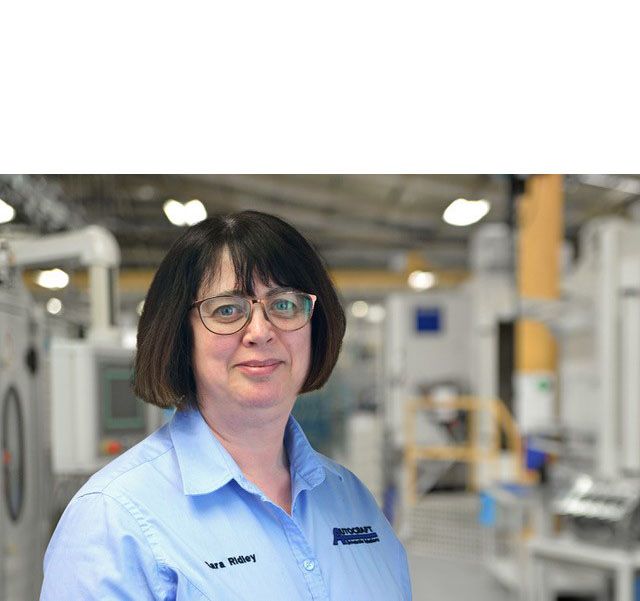Dr Sara Ridley – Engineering and Quality Director at Autocraft EV Solutions – discusses the major obstacles to optimal electric vehicle (EV) battery repair.
The exponential rise in the number of new EVs on our roads over the next few years will bring fresh challenges for OEMs. According to data from the International Energy Agency, global EV sales will climb 35% during this year alone, accounting for almost one fifth of the new car market. As the race to net zero ramps up, car manufacturers will face growing pressure to reconcile their performance and reliability goals with the need to become more sustainable.
Although recycling is often regarded as the fundamental aspect of achieving automotive circularity, evidence indicates that maximising the lifespan of batteries is significantly more impactful in reducing the industry’s environmental footprint.
This can be demonstrated by examining manufacturing data; Autocraft calculated the savings in electricity usage, water usage, and CO2 emissions for an Autocraft remanufactured EV battery pack compared to a virgin pack, and the findings revealed that substituting defective electric vehicle (EV) battery modules with functional ones has a 55% greater positive effect on the environment.
Additionally, rapid growth in EV ownership brings a greater chance of battery faults, potentially exposing manufacturers to reputational risk and rising warranty costs; understanding the challenges of EV battery repair can help OEMs navigate the pitfalls that lie ahead.
EV battery designs – and why it pays to have a plan B
While EV battery faults are relatively rare, OEMs need to be ready for when they do arise. A great way to achieve this is by designing batteries for optimal repairability.
Designing EV batteries to ensure compatibility with repair processes is a vital first step on the road to circularity. Doing so results in a simplified repair process, leading to better outcomes, restoring optimal performance and eliminating the risk of repeat failure and preventing any fault from becoming a potentially fatal one.
Partnering with an established EV battery repair specialist during the design phase of a vehicle provides strong foundations to mitigate the effects of battery faults.
The shortcomings of static testing
Testing is the bedrock of successful EV battery repair and yet, static testing methodologies, which are still widely used, often fall short of the required standard.
Testing must cater for an ever-higher volume of vehicles, with speed increasingly vital. Static testing requires EV batteries to undergo analysis within a laboratory setting and fails to provide the granular detail required to pinpoint the exact location of faults at a cellular level, making it difficult to accurately target the affected area. This significantly increases the scope for costly repeat failures.
A further drawback of static testing is that it is entirely reactive. The absence of any kind of predictive diagnostic capability does not insulate OEMs from the impact of imminent faults, leaving them vulnerable to persistent issues and reputational damage.
We have invested heavily in our dynamic testing capability and developed an industrial-scale solution that can identify faults at a cellular level, allowing us to replace faulty modules with healthy ones that have been tested to guarantee their suitability for use. Our pioneering use of ‘digital twins,’ which are based on thousands of data sets compared with expected levels of degradation, also allows us to highlight where future issues are most likely to occur, so that they can be rectified proactively.
Connecting the dots
Another often overlooked hurdle is battery logistics. When a fault occurs during the warranty period it is critical that repairs are carried out within the shortest possible timeframe. All of this is reliant on having the infrastructure to deliver, repair, and return EV batteries, which becomes even more challenging as the number of EVs continues to skyrocket. Batteries need to be safely discharged and prepared for travel, while the cost of transporting often far exceeds the cost of actually fixing them.
To address these challenges, we developed our unique highly-mobile REVIVE Triage test vans and trailers, which bring diagnostic equipment to the vehicle or battery pack allowing us to safely identify electrical faults and failed modules at a cellular level. While a large portion of electrical faults can be fixed at the roadside or dealership, we also have the network to transport faulty modules to an Autocraft REVIVE Mobile or Workshop for full repair.
When dealing with EV battery repairs at scale, it is better to establish dedicated EV battery diagnostics and repair centres close to where there is greatest demand, helping to reduce the environmental and logistical impact.
Maintaining safety
The bar for safety standards should be set high at all times in the EV sector, yet guaranteeing safety at all stages of the repair process is often challenging.
As the number of EV faults rises, so too does the workload of service engineers, which increases the scope for human error. Our REVIVE mobile and workshop repair centres, for instance, use Augmented Reality and LIDAR technology to ensure employees follow safe-working protocols and process sequences to ensure fault-free repair.
But even the most robust safety protocols cannot account for potential risks that can arise. The repair and storage environment must also be equipped with early detection and fire suppression systems and be able to safely eject battery packs experiencing a thermal event.
A complete EV battery service solution
We can offer a range of testing and repair services, depending on the severity of faults and customer requirements.
Our full-service offer, which includes transportation, ensures optimal EV battery performance and minimal environmental impact, protects OEMs from excess warranty costs and risk.
Our position as a world leader in EV battery testing and diagnostics allows us to identify potential battery issues – even before they have occurred – with greater accuracy and speed than ever before. Building on decades of automotive remanufacturing and repair experience, we then apply our component recovery techniques and ‘no-fault-forward’ assembly processes to provide an exceptionally high quality, efficient and cost-effective EV servicing solution for OEMs during the vehicle warranty period.










